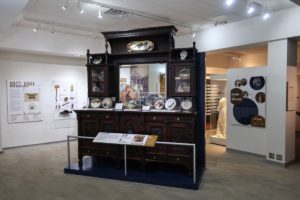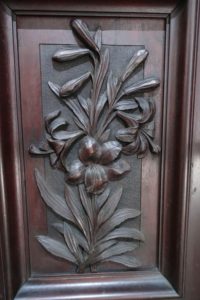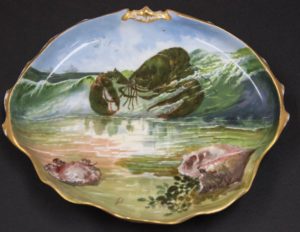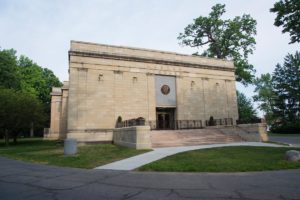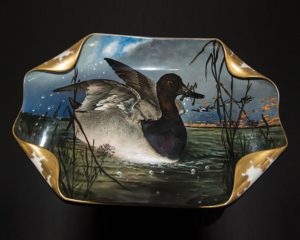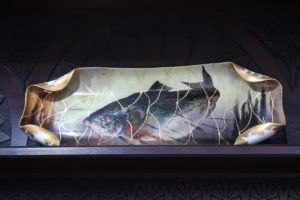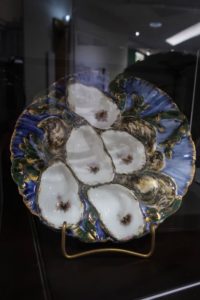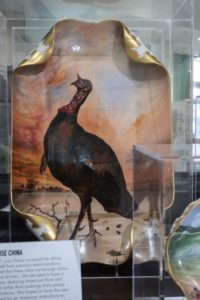The Hayes Presidential Center
Found in the quiet northern Ohio town of Fremont, the Rutherford B. Hayes Presidential Center and his family home, Spiegel Grove, defy stereotypes of a sleepy house museum. Over the past decade, the house’s ground floor was comprehensively restored to its appearance during Hayes’ lifetime, and in honor of the center’s 2016 centennial, the museum galleries were entirely reinstalled. Much to our delight, the decorative arts take a leading role in portraying the life and legacy of this oft-overlooked president.
In the gallery focusing on Hayes’ occupancy of the White House (1877–1881), a large walnut sideboard takes pride of place in the center of the room, and speaks as much to Rutherford and his wife Lucy’s agenda as the first couple as it does to the aesthetic preferences of the day. Having lost the popular vote but won the electoral college, Hayes sought to build executive goodwill and authority, traveling extensively throughout his term in office. As First Lady, Lucy leveraged her position to advance a social-reform agenda, which included civil rights for African-Americans, women’s education, and temperance. Like many presidential couples, they were conscious of the image they projected. Instead of turning to the high fashion of New York and Europe as their predecessors did, they sought to incorporate the growing industries of America, a subject fresh in popular imagination after Philadelphia’s centennial exhibition in 1876.
Today, the sideboard engages with the surrounding museum displays that highlight figures the couple met and worked with during their four years in Washington, dining culture of the era, and their public image as a pious and hardworking American family. The couple ordered the sideboard, along with an accompanying side table, in 1880 from Henry L. Fry of Cincinnati, a nod to their home state and the city where they were married in 1852.
The Fry sideboard is liberally carved with natural motifs, including buckeye plants, day lilies, ferns, and bay laurel, all of which appealed to Victorian aesthetics. These elements speak to the contemporary craze for exotic plants and connect the family’s private dining room to the nearby conservatory Lucy created from the former billiards room. The motifs also serve as a complimentary backdrop for the Hayes’ state china service, collaboratively designed by Lucy and the illustrator Theodore Davis in 1879 to feature North American flora and fauna. Although derided by the critics of the day, the exuberant place settings served as dinnertime conversation pieces and have remained popular with both the public and subsequent first families.
The Hayes Center continues its mission to leverage the collection to better interpret the life and legacy of the 19th President. Other projects include the recently completed cabinet of curiosities on the house’s second floor (a room Hayes jokingly called his “Little Smithsonian”), the development of new galleries and temporary exhibition space, and a new website that offers online access to digitized collections. As the Center moves forward, the interpretation of treasures like this sideboard and china will help shape the museum’s mission for the next hundred years.

